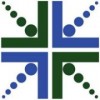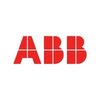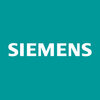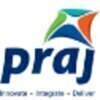Filter interviews by
Voith Paper Technology Interview Questions and Answers
Voith Paper Technology Interview Experiences
3 interviews found
I applied via Recruitment Consulltant and was interviewed before Mar 2022. There were 3 interview rounds.

(2 Questions)
- Q1. Basic mechanical engineering, GD &T / GPS. Engineering drg. 3D software ( Inventor) skill. SAP experience.
- Q2. You have to prepare yourself based on above information. Best of luck.
(1 Question)
- Q1. Introduce yourself. Why are you want to change your present company. How many promotion you achieved in your present organization with duration. Your expectation
Interview Preparation Tips
- Metallurgy
Management Information Systems(Mis) Manager Interview Questions & Answers
posted on 19 Jul 2021
I applied via Recruitment Consultant and was interviewed before Jul 2020. There was 1 interview round.
Interview Questionnaire
1 Question
- Q1. All about myself,my goals,my work ethics
Interview Preparation Tips
Management Information Systems(Mis) Manager Interview Questions asked at other Companies
I applied via Apna Jobs and was interviewed before Feb 2021. There was 1 interview round.
(1 Question)
- Q1. What are your salary expectations?
Interview Preparation Tips
Technician Interview Questions asked at other Companies
Top trending discussions






Interview questions from similar companies

Project Trainee Engineer Interview Questions & Answers
e-con Systemsposted on 11 Jun 2023
I applied via Campus Placement and was interviewed in May 2023. There were 3 interview rounds.
First round full of puzzles
(4 Questions)
- Q1. C programming and all about the cv particularly projects
- Q2. Some of the array problems
- Q3. Bitwise operators and strings
- Q4. Pointers,structures,puzzles..refer gfg for puzzles
(1 Question)
- Q1. General knowledge,resume details and puzzles
Interview Preparation Tips

I applied via Company Website and was interviewed before Sep 2020. There were 3 interview rounds.
Interview Questionnaire
2 Questions
- Q1. Questions about plastics materials & aluminum alloy
- Q2. Questions about paint testings

I applied via Naukri.com and was interviewed in Aug 2022. There were 2 interview rounds.

(14 Questions)
- Q1. What Is oee calculation
- Ans.
OEE calculation is a measure of manufacturing productivity that combines availability, performance, and quality metrics.
OEE stands for Overall Equipment Effectiveness
It is calculated by multiplying availability, performance, and quality percentages
OEE helps identify areas for improvement in manufacturing processes
Example: If a machine has 90% availability, 95% performance, and 98% quality, its OEE would be 83.79%
OEE is...
- Q2. What is poka yoka and capa
- Ans.
Poka yoke is a technique used in manufacturing to prevent errors, while CAPA stands for Corrective and Preventive Action.
Poka yoke is a Japanese term meaning 'mistake-proofing' or 'error-proofing'. It involves designing a process or system in a way that prevents mistakes or errors from occurring.
Poka yoke techniques can include using sensors, alarms, or physical devices to detect and prevent errors.
For example, a poka ...
- Q3. What is difference production and productivity
- Ans.
Production is the process of creating goods or services, while productivity is the measure of efficiency in producing those goods or services.
Production refers to the creation of goods or services, while productivity measures the efficiency of that production.
Production is a process, while productivity is a measure.
Production can be increased by adding more resources, while productivity can be increased by improving pr...
- Q4. What is tpm and jh and jh 7 steps
- Ans.
TPM stands for Total Productive Maintenance and JH stands for Job Hazard Analysis. JH 7 steps are the steps involved in conducting a JH analysis.
TPM is a maintenance strategy aimed at maximizing the productivity of equipment and minimizing downtime.
JH is a safety analysis technique used to identify potential hazards in a job or task.
JH 7 steps involve breaking down a job into steps, identifying potential hazards, deter...
- Q5. What is check sheet and wsqc,swc,wes
- Ans.
Check sheet is a tool used to collect and analyze data. WSQC, SWC, and WES are not commonly used acronyms in relation to production engineering.
Check sheet is a simple data collection tool used to track defects or issues in a process
WSQC, SWC, and WES are not commonly used acronyms in production engineering
However, there are similar tools like the 5S methodology or the DMAIC process for continuous improvement
- Q6. What is 7Qc tools check sheet and parato digram
- Ans.
7QC tools check sheet is a document used to collect and analyze data, while Pareto diagram is a graphical representation of the data.
7QC tools check sheet is used to identify and solve problems in production processes
It helps in collecting and analyzing data related to the process
Pareto diagram is a bar graph that shows the relative frequency or size of problems in descending order of importance
It helps in identifying ...
- Q7. What is rejection handling and red bin analysis
- Ans.
Rejection handling is the process of identifying and addressing rejected products. Red bin analysis is a method of analyzing rejected products to determine the cause of rejection.
Rejection handling involves identifying and segregating rejected products
Red bin analysis involves analyzing rejected products to determine the root cause of rejection
The data collected during red bin analysis can be used to improve production...
- Q8. What do you man power handling
- Ans.
Manpower handling refers to managing and organizing the workforce in a production environment.
It involves recruiting, training, and scheduling employees
Ensuring safety and compliance with regulations
Motivating and supervising workers
Optimizing productivity and efficiency
Dealing with conflicts and resolving issues
Examples include managing a production line, overseeing a team of technicians, or coordinating shifts in a f
- Q9. What is kaizen and capa
- Ans.
Kaizen is a Japanese term for continuous improvement while CAPA stands for Corrective and Preventive Action.
Kaizen involves making small, incremental improvements to processes and systems over time.
CAPA is a process used to identify and address the root cause of a problem or nonconformity.
Kaizen and CAPA are both important tools for improving quality and efficiency in manufacturing and other industries.
Examples of kaiz...
- Q10. What is efficiency in your line
- Ans.
Efficiency in production engineering refers to the ratio of output to input.
Efficiency is a measure of how well resources are utilized in the production process.
It is calculated as the ratio of output to input.
Higher efficiency means more output is produced with the same amount of input.
Efficiency can be improved by optimizing processes, reducing waste, and increasing automation.
For example, reducing the time it takes ...
- Q11. What is 4m changing formats
- Ans.
4m changing formats refers to the process of changing the format of a production line from one product to another.
It involves reconfiguring the machinery and equipment to accommodate the new product
It may require changing the packaging, labeling, and other materials used in the production process
It is a common practice in manufacturing to increase efficiency and flexibility
Example: Changing a production line from makin
- Q12. What is kpi instruction
- Ans.
KPI instruction refers to the guidelines or rules that define how key performance indicators (KPIs) should be measured and reported.
KPI instruction provides a framework for measuring and reporting KPIs consistently and accurately.
It outlines the specific metrics that should be tracked and how they should be calculated.
KPI instruction also includes guidelines for setting targets and benchmarks for KPIs.
Examples of KPI i...
- Q13. What is iso - ts audit
- Ans.
ISO-TS audit is a quality management system audit for automotive industry.
ISO-TS audit is a quality management system audit for automotive industry
It is based on ISO 9001 standard and specific requirements for automotive industry
It focuses on ensuring product quality, safety, and customer satisfaction
It involves auditing the entire production process from design to delivery
Examples of ISO-TS audit include audits of car
- Q14. What is line and machining processing
- Ans.
Line and machining processing are methods used in manufacturing to produce products efficiently and accurately.
Line processing involves a series of steps in which a product is assembled or produced in a linear fashion.
Machining processing involves the use of machines to shape and cut materials into specific shapes and sizes.
Both methods are used to increase efficiency and accuracy in manufacturing processes.
Examples of...
Interview Preparation Tips

I applied via Naukri.com and was interviewed in Aug 2022. There were 2 interview rounds.

(5 Questions)
- Q1. What is the 7q sudule
- Ans.
The 7Q schedule is a quality management tool used to identify and address potential problems in a systematic manner.
The 7Q schedule consists of seven steps that help in identifying and resolving quality issues.
Each step focuses on a specific aspect of quality management, such as process analysis, root cause identification, and corrective actions.
The schedule helps ensure that quality standards are met and maintained th...
- Q2. What is the qa & qc
- Ans.
QA (Quality Assurance) and QC (Quality Control) are two processes that ensure the quality of a product or service.
QA focuses on preventing defects and ensuring that the product meets the required standards.
QC focuses on identifying defects and correcting them before the product is released.
QA is a proactive process while QC is a reactive process.
QA involves planning, designing, and implementing quality systems while QC...
- Q3. What is the least count of digital vernier caliper
- Ans.
The least count of a digital vernier caliper is the smallest measurement that can be accurately read.
The least count is determined by the number of divisions on the main scale and the number of divisions on the vernier scale.
It is usually expressed in millimeters or inches.
For example, if the main scale has divisions of 1 mm and the vernier scale has 10 divisions, the least count would be 0.1 mm.
The least count indicat...
- Q4. What is the principal of micrometre
- Ans.
The principle of micrometre is to measure small distances or thicknesses with high precision.
Micrometre is a measuring instrument used to measure dimensions in micrometers (µm).
It consists of a stationary anvil and a movable spindle that can be adjusted to measure the distance between them.
The micrometre scale is typically graduated in increments of 0.01 mm or 0.001 mm.
To measure an object, the spindle is brought into ...
- Q5. What is the diff b/w micrometre and vernier caliper
- Ans.
Micrometer and vernier caliper are both precision measuring instruments, but they differ in their design and usage.
Micrometer is used for measuring small dimensions with high accuracy, typically in the range of 0.001mm to 25mm.
Vernier caliper is used for measuring larger dimensions with good accuracy, typically in the range of 0.02mm to 1500mm.
Micrometer has a spindle and anvil mechanism, where the spindle moves toward...
Interview Preparation Tips
- Qa and qc
What is quality

I applied via campus placement at KLESBVB College of Engineering and Technology, Hubli and was interviewed in Apr 2022. There were 4 interview rounds.
Test consisting of aptitude , technical questions and two coding questions
(1 Question)
- Q1. Questions asked were mostly on my project and technical questions on OS, C programming, and basic questions on DSA
(1 Question)
- Q1. More questions on my project, implementation of basic codes like palindrome, prime number, etc.
(1 Question)
- Q1. The HR interaction was just to assess if I understood the job role and if I was willing to relocate
Interview Preparation Tips
- Operating Systems
- C
- Data Structures

(1 Question)
- Q1. Question from resume
(1 Question)
- Q1. Project planning, tools, risk management procedure
(1 Question)
- Q1. 1-1 with director, what is your understanding of the role applied for
(4 Questions)
- Q1. Where do you see yourself in 5 years?
- Q2. What are your salary expectations?
- Q3. Why are you looking for a change?
- Q4. What are your strengths and weaknesses?
Interview Preparation Tips


(1 Question)
- Q1. About the current role and responsibilities
(1 Question)
- Q1. All about construction quality and it’s compliance
Voith Paper Technology Interview FAQs
Tell us how to improve this page.
Interview Questions for Popular Designations
People are getting interviews through
Interview Questions from Similar Companies
Voith Paper Technology Reviews and Ratings
based on 43 reviews
Rating in categories
|
Assistant Manager
18
salaries
| ₹10 L/yr - ₹17 L/yr |
|
Senior Engineer
13
salaries
| ₹6 L/yr - ₹9 L/yr |
|
Associate Manager
9
salaries
| ₹14 L/yr - ₹20.5 L/yr |
|
Senior Executive
7
salaries
| ₹5.8 L/yr - ₹9 L/yr |
|
Lead Engineer
6
salaries
| ₹9 L/yr - ₹12 L/yr |

Andritz Hydro Location India

Valmet

ABB

BHEL
Calculate your in-hand salary
- Home >
- Interviews >
- Voith Paper Technology Interview Questions





